If you’ve followed me for any length of time on Drawing Live, you’d know that I love examining the intersection of Magic and game design. Both are huge passions of mine, with the former being my biggest hobby and game design my vocation. I’ve been steadily going through Magic sets in my Mechanics in Review series to review, extoll, and critique every set’s new (named) mechanics.
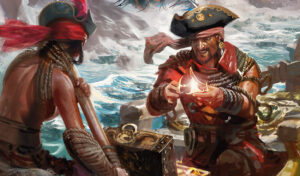
Given that it’s Hipsters’ 10 year anniversary, I figured why not Read Ahead and see what the most awesome mechanics of the past decade are. I chose the past decade not only out of celebration, but because it’s more interesting. If we went all the way back, our top 10 would be mostly evergreen and deciduous mechanics (with Flying as #1); they keep coming back because they’re such good designs, after all. So, without further ado, here we go!
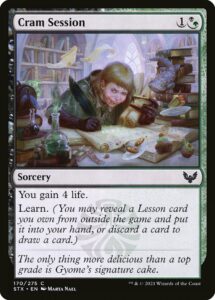
10. Learn (2021)
Learn absolutely defined Strixhaven, both its Limited environment and one of the last cards to be banned in Standard (Divide by Zero). I adore the mechanic, as it was the glue that allowed a spells-matter format to finally function. It did something heretofore unthinkable in Limited—it let your deck be bigger than the cards inside it (Constructed had long since done that with cards like Cunning Wish).
Learn (and Lessons) demonstrate a deep awareness of Magic’s past. Unstable introduced alternate decks with Contraptions, but had a broken incentive structure: cards like Faerie Aerie were so powerful that you were punished for putting other contraptions in your deck (since they decreased your likelihood of getting your best Contraption). Lessons fixed that by being tutorable (and it’s why Unfinity’s Attractions demand you play at least 3 in your deck). Wizards knew how powerful deterministic mechanics like Transmute and Companion are, so Lessons were drastically underpowered to keep them balanced. And finally, Learn always fad a function if you ran out of Lessons.
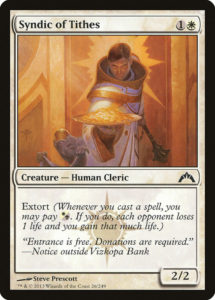
9. Extort (2013)
Extort has a lot of my favorite features: it creates incentives, it’s simple, and it piggybacks off of familiarity. “Bleeder” style decks, where you drain and attrition your opponent to death, are mainstays in white-black. Extort plays right in that space, but instead of converting creature death into resources, you convert spells into damage. It adds extra excitement in the late game, it provides a constant (but simple) decision tree when sequencing your spells throughout the game, and it lets early game creatures become relevant threats while still staying small.
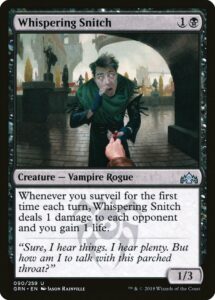
8. Surveil (2018)
Yes, Surveil is almost the same mechanic as Scry, but sometimes tiny innovations can yield something wonderful. It’s slightly stronger than Scry thanks to graveyard synergies, though it also has a different incentive structure. It’s more skill-intensive, since it feels worse to bin a spell than tuck it on the bottom of your deck (even though the two are often functionally equivalent). It both feels and is more dangerous, as Dimir mirrors could sometime end in decking when one player got too ambitious with their lategame Surveils.
Nowadays, Surveil is in most sets (albeit without being its keyword), quietly doing great work and waiting to come back in full force eventually.
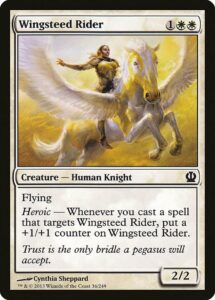
7. Heroic (2013)
Several years ago at Game Developers Conference, Susan McKinley Ross gave a great talk on the importance of giving players little bingo moments. If you give players quests to achieve on the road to victory, you can both help them learn to play and give them something to celebrate even if they lose.
In general, I find a lot of new aggressive mechanics sort of dull. Part of this is personal bias (I tend to prefer slower decks), but I think some of this is reflected in the mechanics themselves. Training isn’t very aspirational, it just rewards you for playing big creatures and attacking. Boast is often just a delayed enters-the-battlefield ability. Heroic, on the other hand, gives you a real quest—combine two disparate components that you normally might not play together to make your creature. Sure, it’s not a very hard quest—aggressive decks are often good homes for combat tricks and auras—but the end result felt more exciting to me than most aggressive archetypes and changed the way I evaluated cards.
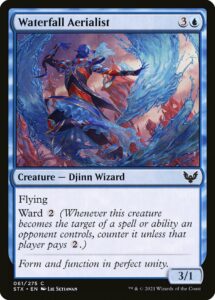
6. Ward (2021)
For almost all of Magic’s history, protective abilities had major problems. Protection was complicated (it does four different things and often subverts player expectations), Shroud confused players and just eliminated interactions, and Hexproof was dangerously powerful. Even Indestructible has issues at volume, since it disables so many aspects of combat and interaction.
Ward keyworded Frost Titan‘s ability from over a decade prior, and with it, Magic suddenly had access to a clean, simple protective ability. Unlike Hexproof, it just delayed interaction (rather than outright disabled it), and it could be answered by familiar “can’t be countered” text rather than clunky, explicit text like Detection Tower‘s. It’s a great, simple mechanic that solves a decades-long problem.
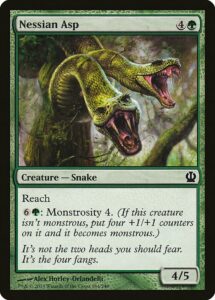
5. Monstrosity (2013)
Perhaps I’m dating myself by my love of so many 2013 mechanics, but I think they got a lot right (and only had so much low-hanging fruit) back then. The mechanic is simple and resonant—”oh no! The monster got bigger and angrier!” It’s signified in a clean and familiar manner. It shuts itself off, which prevents it from being overpowered or only putting on paltry nuimbers of counters. And it’s a mana sink, something that all Limited formats want.
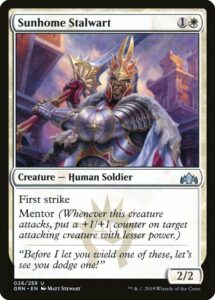
4. Mentor (2018)
Remember everything I said about Heroic? I developed those thoughts through because Mentor is my favorite (non-evergreen) combat keyword of all time. It gives you constant quests, it changes card evaluation (suddenly creatures can be better by virtue of having lower power, and you might cast combat tricks before attacking), and it gives you potent yet simple rewards for your efforts. Yes, I’m still surprised by how completely different Mentor plays from Training, and that’s a fantastic lesson in how small differences in design can yield disproportionate results.
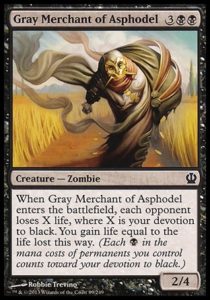
3. Devotion (2013)
Devotion is the greatest comeback mechanic of all time. Way back in 2008, there was an unpopular mechanic known as Chroma. Devotion is the exact same mechanic, except far more restricted (it can only look at mana symbols of your cards on the battlefield) and far more resonant (the concept of belief is pretty common).
As with so many mechanics on this list, Devotion creates novel incentives out of familiar components. In all formats, Alpine Watchdog is better than Steadfast Guard (okay, barring tribal shenanigans). Devotion flips the script, turning one of Magic’s most foundational restrictions—a mana cost—into an asset. Great design like this turns the deeply familiar into something novel.
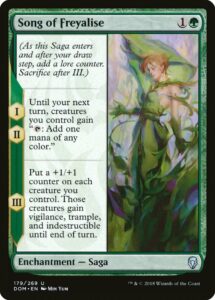
2. Sagas (2018)
Back in August, I said that “sagas are one of the most significant mechanics of the past decade.” I did that because it’s true. They are phenomanal. They tell resonant stories (both about Magic lore and Magic twists on real world stories), they package mechanical complexity into a simple array of steps, and they are satisfying over time. They herald back to 2007’s Future Sight, where they use discarded ideas from how the first Planeswalker cards could have worked. It’s no surprise Sagas have become an annual mechanic.
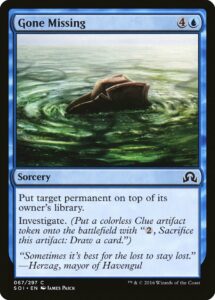
1. Investigate (2016)
While 2013, 2018, and 2021 have somehow dominated the top 10, a dark horse gets to win it all. Investigate is the progenitor of an entire lineage of mechanics: Treasures, Food, and Blood (with some one-off mechanics like Shard tokens for good measure). Investigate is another simple mechanic but is incredibly open-ended. On its own, it provides one of Magic’s most valuable resources (cards). It does so in a way that lets Wizards add fractional value to cards (since you have to pay for the card, it’s weaker than adding “draw a card” and doesn’t make costs significantly more). But it also enables artifact, token, and sacrifice synergies (plus other interactions like Ascend). Investigate plays great on its, but its multitudinous interactions make it more than the sum of its parts, and those successes have been replicated again and again over the years as more artifact tokens have been added to the game. And that’s why I’d argue it’s the most awesome, best-designed mechanic of the decade.
Zachary Barash is a New York City-based game designer and the last commissioner of Team Draft League. He designs for Kingdom Death: Monster, has a Game Design MFA from the NYU Game Center, and does freelance game design. When the stars align, he streams Magic (but the stars align way less often than he’d like).

